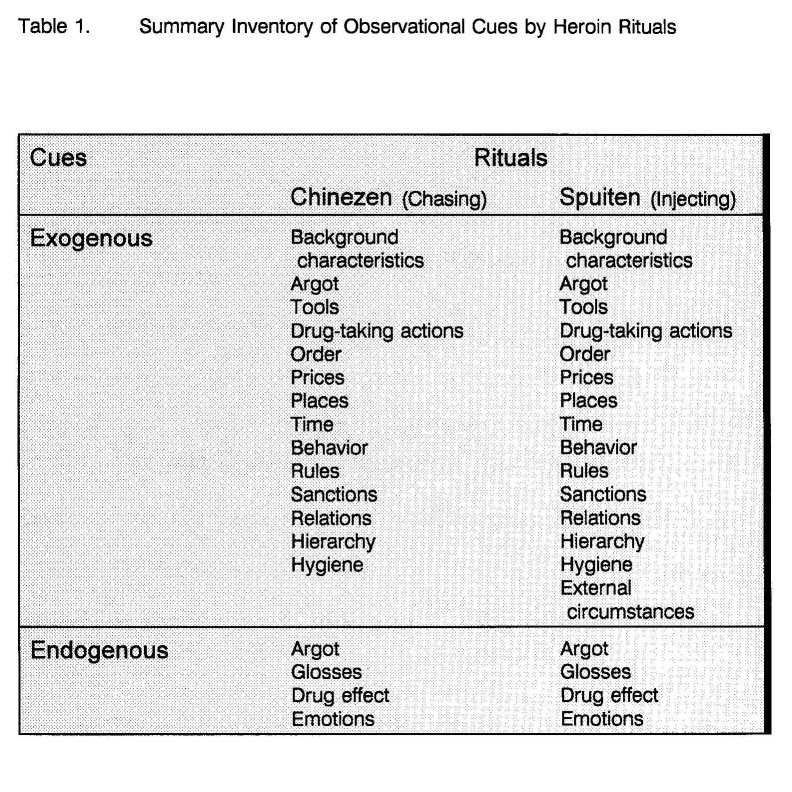Appendix A HEROIN RITUALS
| Books - Drug Use as a Social Ritual |
Drug Abuse
Appendix A
HEROIN RITUALS
Observational Protocol of
Endogenous and Exogenous Cues
(Abbreviated from original document)
J-P.C. Grund, Ch.D. Kaplan, N.F.P. Adriaans and J. Harms
The observational protocol used in this investigation provides an instrument to guide field research of heroin routes of administration in naturalistic settings. For theoretical purposes, we have termed the routes of administration for heroin observed in naturalistic settings as heroin rituals. The concept of ritual has been used in previous studies of drug use. Our operational definition of ritual has been adopted from M. H. Agar (1977) For an event to be a ritual event, it must prescribe a sequence of psychomotor acts... (and) the prescribed psychomotor sequence must be invested with a special meaning for the person performing that sequence." The instrument is partioned across two dimensions. The first dimension termed heroin rituals consists of two categories; spuiten (injecting) and chinezen (chasing the dragon", smoking). The second dimension refers to observational cues. Observational cues have been classified as exogenous and endogenous. Exogenous cues index external ecological events that correspond to the "prescribed psychomotor sequence". In addition, participant background characteristics, paraphernalia and environmental features partly compose this category. Endogenous cues index internal psychosocial events that correspond to the "special meanings" of the rituals. Internal experience is routinely expressed and displayed through language or gesture thereby available for direct observation in naturalistic settings.
Table 1. provides a summary overview of the inventory of the dimension of endogenous and exogenous cues cross-classified by the dimension of rituals. The table has the character of "fuzzy (sub)sets" with overlap of the formal items assigned to its four "cells." In addition, this classification may not be exhaustive. Future research may be able to add either new dimensions, categories or items to the instrument.
| < Prev | Next > |
|---|












